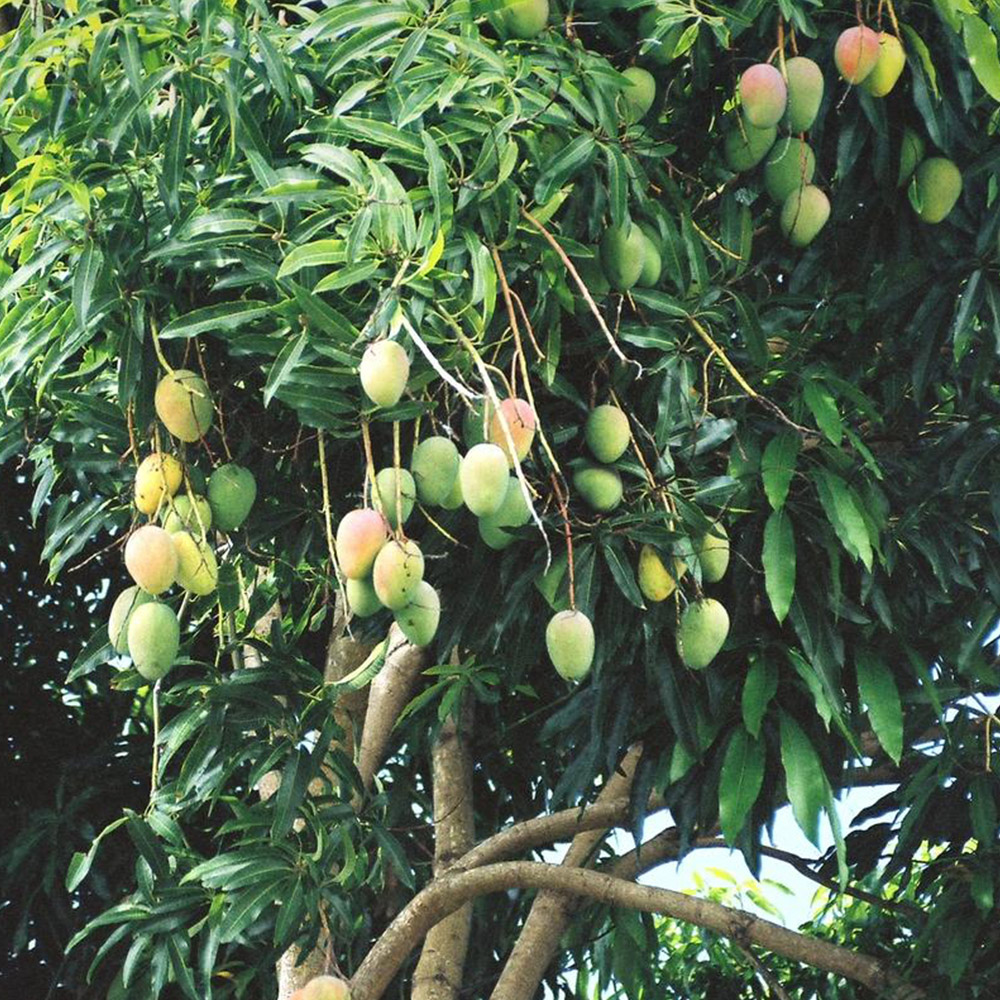Welcome to your holistic living

Botanical Name: Mangifera indica Linn
Family: Anacardiaceae
English Name: Mango tree
Malayalam Name: Amaram
Hindi Name: Aam
The mango tree (Mangifera indica) is a large, evergreen tree growing up to 30–40 m tall with a stout trunk, rough dark brown bark, and a dense, spreading crown. Its simple, alternate, leathery leaves are lanceolate with entire margins, reddish when young and dark green on maturity. The tree bears large terminal panicles of numerous small, fragrant, yellowish-white flowers, which are polygamous, actinomorphic, pentamerous, and complete, with five free sepals and petals; the androecium usually has five stamens, but only one or two are fertile, while the gynoecium is superior, monocarpellary, unilocular, and oblique. The fruit is a large, fleshy drupe with a smooth thin epicarp, juicy sweet mesocarp, and a hard stony endocarp enclosing a single large exalbuminous seed with folded cotyledons. Pollination occurs mainly by insects, and seeds are dispersed by humans, animals, and gravity. Economically and culturally important, mango fruits are consumed fresh and processed into pickles, juices, and sweets; its wood is used for furniture and packing; while leaves, bark, and seed kernels hold medicinal value in Ayurveda. In Indian culture, the mango is considered sacred and a symbol of prosperity.
Roots, leaves, bark, flower, fruit
1. Dāruņaka (Dandruff) Powders prepared from seed of Amra (Mangifera indica) and Śiva (Terminalia chebula) is mixed with milk and paste is prepared. Application of this paste relieves Dāruņaka (Dandruff). 2. Chardi (Vomiting) Decoction prepared from tender leaves of Amra (Mangifera indica) and Jambu (Syzigium cumini) cooled, added with honey and administered.
Antioxidant activity Anti-inflammatory activity Immunomodulatory activity Antimicrobial & Antiviral Antifungal properties as well. Antidiabetic activity Hepatoprotective activity Cardioprotective & Hypolipidemic Anti-cancer activity Gastroprotective activity Analgesic activity
Rasa: Madhura
Guna: Guru, Snigdha
Virya: Sita
Vipaka: 1.pakwa phala-Madhura vipaka 2.apakwa phala-amla vipaka 3.Twak- katu vipaka
Dosha Karma: Tridosakaraka